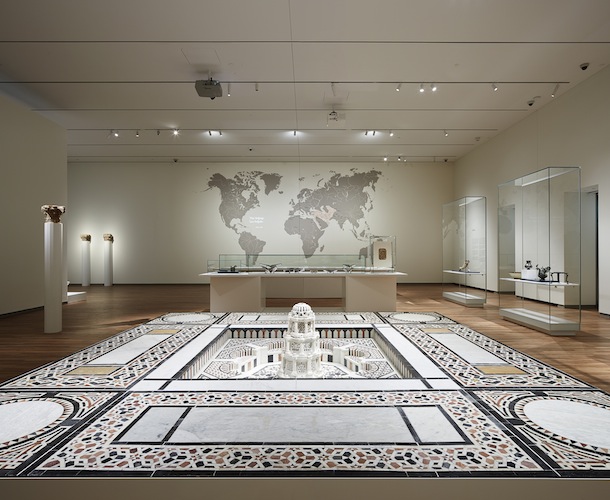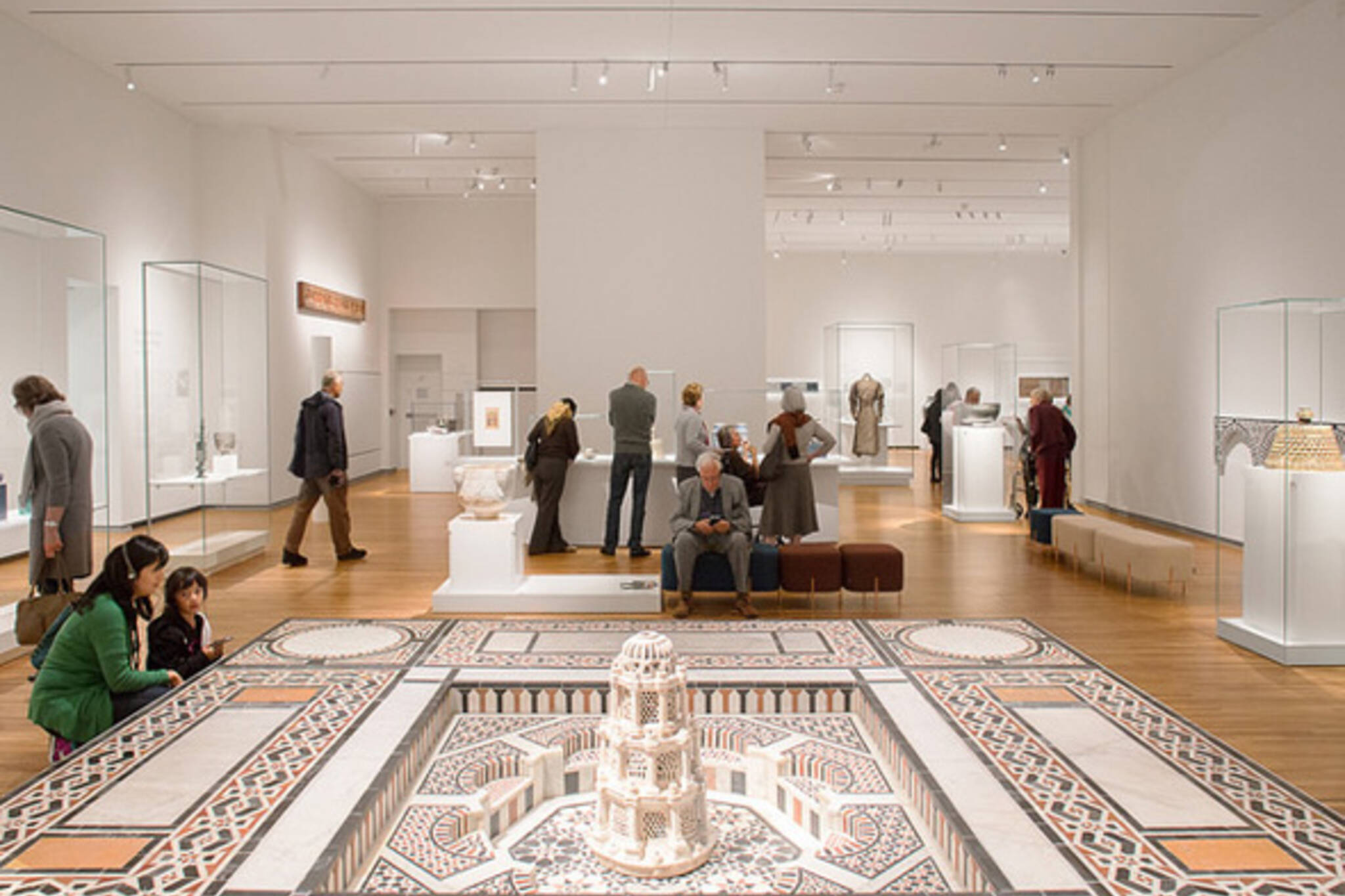Aga Khan Museum Photos: A Visual Trip Via Background
Aga Khan Museum Photos: A Visual Trip Via Background
Blog Article
Check Out the Rich Cultural Heritage at Aga Khan Museum: Discover the Wonders of Islamic Art and Society
Nestled in the heart of Toronto, the Aga Khan Museum stands as a testament to the rich social heritage of Islamic art and society. As site visitors tip into this building oasis, they are transported to a globe where beauty and spirituality intertwine seamlessly. The museum's collection showcases a varied series of work of arts, from the detailed art of calligraphy to the fascinating textiles and rugs that inform tales of old customs. It is within these wall surfaces that can absolutely value the pottery practice of Islamic human being with its splendid porcelains, or explore the insights of Islamic literary works and scholarship through the illuminated manuscripts on screen. The Aga Khan Gallery supplies a trip of exploration, inviting visitors to check out the marvels of Islamic art and society that continue to motivate and captivate.
Gallery Style: A Sanctuary of Islamic Design
The Aga Khan Gallery showcases an exceptional mix of modern design and conventional Islamic style, creating a sanctuary that symbolizes the beauty and splendor of Islamic society. The gallery's design is a testimony to the abundant heritage and artistic customs of the Islamic globe.
Made by popular designer Fumihiko Maki, the Aga Khan Museum stands as a spectacular architectural work of art. The building's outside features a collection of interlacing geometric patterns, reflecting the ins and out and precision that are hallmarks of Islamic layout. The use of light and darkness produces an exciting result, evoking a feeling of serenity and serenity.
Inside the museum, site visitors are welcomed by a light-filled and sizable room, embellished with intricate calligraphy and geometric patterns. The use of materials such as limestone, wood, and marble additional enhances the sense of elegance and magnificence.
The museum's galleries are attentively designed to display a varied collection of Islamic art, including porcelains, paints, manuscripts, and fabrics. Each gallery is carefully curated to offer a thorough understanding of the cultural significance and artistic achievements of Islamic human beings throughout background.
In enhancement to the main building, the Aga Khan Museum likewise includes perfectly designed gardens, giving visitors with a calm exterior space to link and mirror with nature.
Masterpieces of Islamic Calligraphy
Charming instances of Islamic calligraphy poise the halls of the Aga Khan Gallery, showcasing the proficiency and artistry of this ancient type of created expression. Islamic calligraphy holds a considerable area in the Islamic creative practice, serving as a means to perfectly communicate words of the Quran and various other religious messages.
The Aga Khan Museum is home to an impressive collection of calligraphic jobs, including items from numerous historic durations and areas. These masterpieces show the variety and development of Islamic calligraphy with time. Visitors can marvel at the complex and accurate strokes, the harmonious arrangement of letters, and the elegant structures that make each piece an aesthetic joy.
Islamic calligraphy is not just a kind of decorative art; it is also a spiritual practice. The calligrapher has to possess not only technological skill yet likewise a deep understanding of the spiritual messages they are recording. With their work, calligraphers aim to convey the charm and power of the divine word.
The Aga Khan Museum's collection of Islamic calligraphy provides site visitors a distinct possibility to value and recognize this ancient art kind. It enables us to discover the abundant social heritage and the extensive significance of calligraphy in the Islamic world. Through these work of arts, we can get a deeper insight into the elegance and spirituality of Islamic art and society.

Textiles and Carpets: A Tapestry of Islamic Virtuosity
Featuring an exciting screen of elaborate designs and careful craftsmanship, the Aga Khan Gallery takes visitors on a trip right into the world of Islamic artistry through its collection of carpetings and textiles. These amazing textiles and carpetings showcase the abundant social heritage of Islamic worlds and offer a peek right into the imaginative customs that have been passed down through generations.
Textiles and rugs hold a substantial area in Islamic art, not just for their visual charm however likewise for their historical and cultural value. They played a crucial function in Islamic societies, functioning as ornamental items in homes, churches, and also as condition symbols. The Aga Khan Gallery's collection includes a large range of carpets and fabrics, each standing for different durations and regions of the Islamic globe.
These layouts showcase the mastery of Islamic craftsmen who fastidiously wove detailed patterns using different weaving strategies. They provide a sense of heat and convenience, showing the significance of carpetings in Islamic cultures as petition rugs and icons of hospitality.

Ceramics: The Ceramic Tradition of Islamic Human Being
With an abundant history covering across Islamic worlds, the Aga Khan Gallery showcases the intricate pottery custom that has actually prospered throughout the Islamic globe. Ceramics have played a substantial role in Islamic art and culture, serving both practical and attractive functions (Aga Khan Museum admission). The pottery custom of Islamic people is identified by its remarkable craftsmanship, splendid styles, and diverse styles
Islamic ceramics incorporate a vast range of forms, including vessels, tiles, and building elements. The strategies used in the production of Islamic ceramics differ, with some pieces being wheel-thrown, while others are formed or hand-built.
One of the distinct functions of Islamic ceramic is its use of geometric and floral concepts. These layouts are typically influenced by nature, with aspects such as blossoms, leaves, and vines being intricately woven into the patterns. Islamic ceramics also feature calligraphic inscriptions, which can be religious in nature or share poetic knowledgeables.
The Aga Khan Museum houses a substantial collection of Islamic ceramics, providing site visitors with an opportunity to explore the abundant heritage and artistic accomplishments of Islamic potters. Via these ceramics, one can get understanding into the social, historical, and technical advancements of Islamic human being, in addition to value the beauty and craftsmanship of these remarkable artworks.
Illuminated Manuscripts: Insights Into Islamic Literature and Scholarship
Islamic illuminated manuscripts supply useful insights into the literature and scholarship of Islamic civilization. These manuscripts are wonderfully crafted jobs of art that combine calligraphy, miniatures, and attractive elements to produce aesthetically spectacular publications. They were developed by competent scribes and musicians that painstakingly duplicated and illustrated crucial messages, including the Quran, Hadiths, verse, and clinical treatises.
One of one of the most well-known instances of Islamic illuminated manuscripts is the Shahnama, or Book of Kings, which is an epic written by the Persian poet Ferdowsi in the 10th century. This manuscript is embellished with intricate miniatures that show scenes from the tales and stories included within the poem. It not just supplies a peek into the literary traditions of the Islamic globe however likewise reveals the imaginative strategies and styles of the time.
Islamic illuminated manuscripts additionally played a substantial duty in the transmission of understanding and ideas. They were commonly made use of as educational tools, with the message and pictures working as a method of sharing complex concepts and ideas. These manuscripts were extremely valued and cherished by scholars and pundits, that acknowledged their value in preserving and sharing expertise.
Final Thought
In final thought, the Aga Khan Gallery offers an exciting journey through the abundant cultural heritage of Islamic art and society - Aga Khan Museum photos. From its stunning design to the masterpieces of calligraphy, fabrics, ceramics, and lit up manuscripts, the gallery offers valuable understandings right into the diverse practices and achievements of go to my site Islamic civilization. It is a true sanctuary of Islamic style and a must-visit for any person thinking about discovering the wonders of this prominent and vibrant society
It is within these walls that one can absolutely appreciate the pottery custom of Islamic people through its elegant ceramics, or dive into the insights of Islamic literature and scholarship via the lit up manuscripts on display.The Aga Khan Museum's collection of Islamic calligraphy supplies site visitors a special opportunity to appreciate and recognize this old art kind.With a rich history covering throughout Islamic civilizations, the Aga Khan Gallery showcases the intricate ceramic custom that has actually thrived throughout the Islamic world.Islamic illuminated manuscripts supply important understandings into the literature and scholarship of Islamic human being.In verdict, the Aga Khan Museum provides an exciting trip through the rich cultural heritage of Islamic art and society.
Please visit one of our local supporters - Https://therepairstore.ca/
Report this page